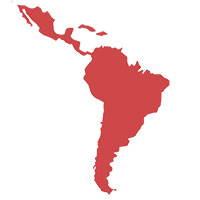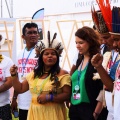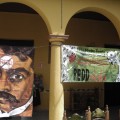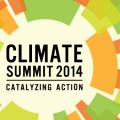Environmentalists, a Dangerous Profession
Sarah Brady | December 5, 2014.
Around the world, environmental activists are being killed on a weekly basis, yet some governments are turning a blind eye.
Standing up for Mother Earth is a tough job. There’s only so many whales that one can save save, trees that could be hugged or Bikram yoga classes attended—or so the stereotype goes.
Frontline activists, people often at the forefront of climate change impacts and campaigns, are being killed in increasing numbers, according to Global Witness, an advocacy group.
These are the people who have never waxed lyrical on the benefits of vegan cheese or kale juice. Indigenous and community environmental activists are fighting a bottom-up war against powerful local and global interests.
Peru, the host of COP20, the latest round of the UN climate change negotiations, is the fourth most dangerous place for defenders of the nation’s oceans, mountains, rivers and rainforests.
A heavy burden comes with the ‘environmentalist’ tag when on the frontline of climate justice. Since 2002, Global Witness has registered 57 killings of environmental activists in Peru alone, and these crimes often go unpunished.
Most recently killed was Edwin Chota and three fellow environmentalists from the northeastern border region of Ucayali. Chota’s opposition to illegal logging within his indigenous community’s territory won him the wrath of the local logging mafia. Daisy Zapata, an activist from Peruvian Indigenous women’s organisation AIDESEP, lamented the “shame that Edwin Chota had to be murdered before the state could begin to pay attention.”
For leaders such as Chota, being an environmentalist is more than a label—it is a challenge to powerful corporate interests and systemic human rights abuses.
Competition for natural resources is strangling the Peruvian Amazon. Extraction industries encroach on marginalised communities. Around 72 per cent of indigenous communities still lack legal titles to their ancestral lands. The UN Economic Commission on Latin America and the Caribbean registered more than 200 conflicts in indigenous territories between 2010 and 2013.
Around the world, campaigners, community leaders and journalists are the real vanguard of environmental protection. The number of killings reached a high of 147 murders in 2012, up from 51 in 2002. And impunity runs high. Global Witness reported 656 cases in which there is no information about the suspected killers, while cases where the killers have been tried, convicted and punished sit at a miserly six.
It is a struggle that plays out in many fields, says activist Marcelo Duraõ of Via Campesina International: “The difficulty is that the state says it will protect us, but the local conflicts are very strong. Our environmentalists are not just environmentalists. They are also defending their indigenous, family-farming lifestyle. So these people are exposed to violence on many sides. As much as the state may create some form of protection, the threats continue.”
Murder of environmental activists is most intense in Latin America and the Asia-Pacific region. Brazil ranks as most deadly, with 448 murders in the past decade. The perpetrators? Large agricultural interests and illegal mining. The country’s land distribution is one of the most concentrated and unequal in the world, and impunity is rampant. Only ten per cent of cases are taken to court, and a mere one per cent end in conviction.
Honduras and the Philippines take second and third place respectively as the most dangerous countries to make an environmental stand. Whist the violence stems from waste dumping issues to construction of large-scale hydroelectric dams, confrontations on mining projects have proved the most deadly in the Philippines.
The trend continues around the world. In the Democratic Republic of Congo, park rangers and local activists fought oil companies to defend the Virunga Park, home of the last surviving wild mountain gorillas. A Virunga park ranger was found dead last April.
In Russia, activists were detained for protesting the construction of Olympic facilities in ‘protected’ nature zones last February. Only months before, Russian authorities sent 30 activists to jail on piracy charges after a Greenpeace action protesting Arctic oil drilling.
So the next time you find yourself in a heated Twitter exchange or a blood-pressure raising Facebook comment war, consider those who have lost their lives to protect the environment.
This week nations will parade their environmental credentials at the UN climate conference in Lima. If Peru and guest countries wish to be environmental leaders on a global scale, they must protect their environmental leaders at home.













comment